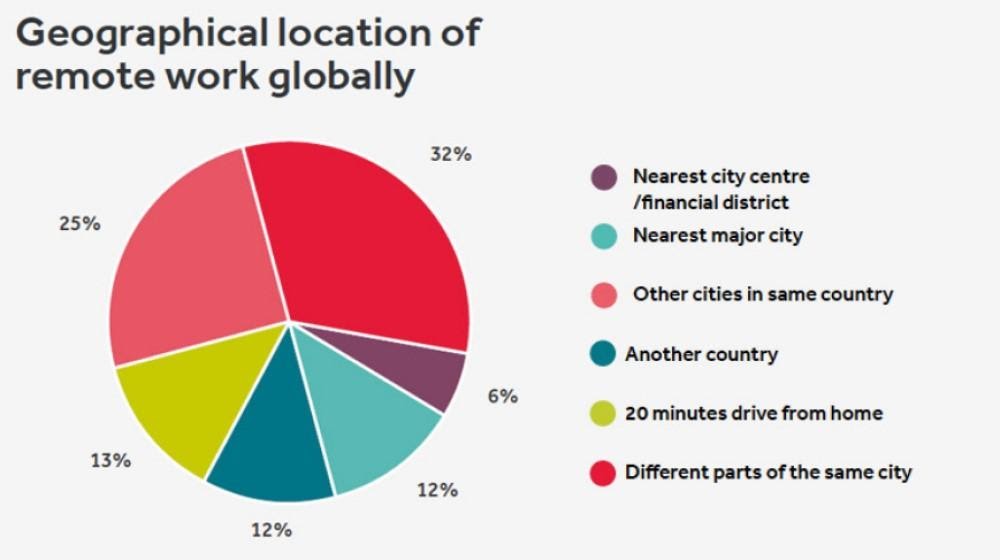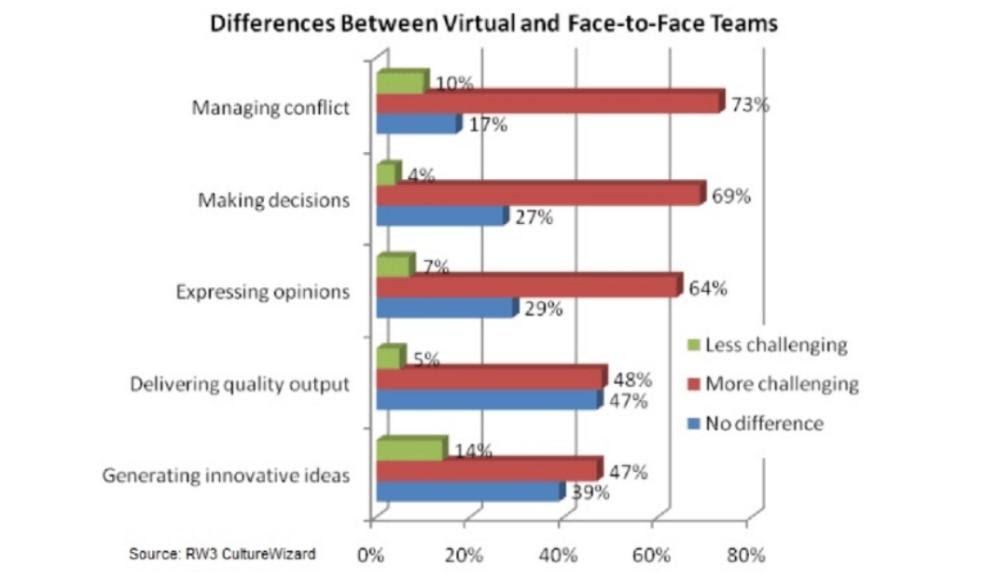Building a remote team: pros, cons, tools for effective collaboration

Are you thinking of running a remote team? It’s a big step, but one that could yield tremendous rewards. Remote working is becoming ever more popular in the modern business world. An IWG study found that 70% of people globally work remotely at least once a week. Before you take the leap and start to build a wholly remote team, you need to understand the pros and cons.
As excited as workers and businesses might be for the transition to a primarily remote workforce, studies show that we may be ill-equipped. A 2019 study from OwlLabs states that 38% of remote workers and 15% of remote managers received no training on how to work remotely.
In an effort to fill this gap, Poll Everywhere crafted an in-depth guide on how to build and manage an effective and collaborative remote team, hold more efficient meetings, scale your company culture across the globe, and capitalize on upcoming 2020 tech trends with clarity and consistency.
Below you’ll find the main benefits and drawbacks of running a team with no central workplace. Those pros and cons, too, are coupled with relevant tips and tools. They’ll help you make the most of the remote working advantages and best overcome the challenges.
Pros of a remote team
There’s a reason why more and more businesses choose to go remote. The advantages of running a diverse and often global team are many. If you’re thinking of moving away from a traditional office, it’s worth thinking about the benefits the decision may bring.
Not all of the following advantages will necessarily apply to your firm. They are, however, examples of why many businesses choose to go remote. If you can see how these benefits could boost your business, a remote team might be the right choice for you.
Broader talent pool
When hiring a new team member, you have a list of required and desirable characteristics. You’ll need any applicant to have specific qualifications or prior experience. You’ll also want them to demonstrate a range of skills and abilities.
If your work takes place in an office, there’s something else that has to go on the list. Any candidate needs to live nearby or be able to get to work on time each day. If you’re running a remote team, that restriction no longer applies.

(https://www.regus.co.uk/work-uk/the-workplace-revolution/)
Assuming you’re willing to work across time zones, the talent pool you can hire from is global. That makes finding the perfect new employee far quicker and more efficient. No longer will you have to settle for the best available. You can hire the best there is.
Work-life balance & productivity
A business that works remotely can offer greater flexibility to its employees. Staff who work from home – or wherever they choose – can tailor their working habits to suit them. They can clock on and work at the times when they feel most productive. A quick and easy video conference can replace lengthy and unrewarding visits to a meeting room.
In short, remote workers can fit their hours around family life or other commitments. That kind of flexibility gives employees a far better work-life balance. As well as making them happier, as a result, that also makes them more productive. Greater flexibility in hours and processes is a win-win for firms and employees alike.
Loyalty & retention
Letting your staff achieve a better work-life balance has another knock-on effect. Your workers will be happier in their jobs, and therefore more loyal. Your employee retention will improve, and you won’t have to cope with high staff turnover.
If you can spend less time hiring more staff, you can spend more time growing your business. What’s more, happy and loyal workers are more engaged in your company. They’re invested in the firm and in making it successful. Employees who intend to stick with you for the long haul will work harder to ensure the company’s success.
Cost-efficiency
Running an office or business premises is expensive. Buying or renting property needs a significant, ongoing outlay of capital. That’s before you even get to your utility bills, the cost of equipment, and plenty more expenses to boot.
You can manage a remote team on a much tighter budget. In many cases you can even reduce staffing costs, or free up your budget to pay staff a higher salary. Depending on your industry, you might need a range of SaaS tools but little more besides. Some firms can even operate perfectly well with just the use of Outlook, a free chat messaging system, and Google Drive.
Cons of a remote team
Like all significant business decisions, there are some notable drawbacks and challenges of which you must be aware of if you go remote. It’s vital to understand them in order to make a fully informed decision.
If you appreciate the challenges before choosing to go remote, too, you can more readily rise to them. With that in mind, you’ll also find tips and tools for overcoming each drawback to going remote, as you read on.
Tougher to build company culture
Company culture is about having a team that shares the same vision, values, and goals. It’s to do with staff having a rapport and a camaraderie that make work both more enjoyable and more productive. You don’t need an office or workplace to build company culture, but it does make it easier. When your team is all in one place, it’s natural for a feeling of togetherness to develop.

(https://www.saplinghr.com/blog/building-culture-through-employee-onboarding)
With a remote workforce, you have to work harder to achieve it. Tools like Glip are excellent for fostering better communication within your team. You may also want to think about team engagement strategies you can employ to help things along.
Communication challenges
With a remote team, communication is different than in a traditional workplace. You can’t just walk across the office when you need to speak to someone. What’s more, not everyone will be available at the same time. That’s the flip side of offering greater flexibility to your employees.
As a manager of a remote team, you have to meet these communication challenges. Fortunately, tech is on your side. Video conference technology is a particularly useful example. A quick video call is an excellent way to clearly and effectively communicate with your team. Regular check-ins or conferences, too, can help further foster company culture.
Adjusting management style
In business, managers are leaders. Keeping track of employee morale and wellbeing is a vital part of leadership. So is ensuring each worker is being as productive as possible and staying focussed. These tasks are easier when you work in the same place as your employees. When you manage a remote team, you’ll need to adopt new tactics.

(https://www.keela.co/blog/nonprofit-resources/working-remote)
Scheduling time to check-in personally with each employee is a must. You don’t have to do it daily, or even weekly, but it’s still something to manage. A chat with your team members about how they’re coping and any issues they may have is good for everyone. It ensures that between those check-ins, you can trust that each member of staff is getting the job done.
Hard to turn back
One of the reasons it’s so vital to know the pros and cons of a remote team is because it’s hard to row back from going remote. Once you decide to ditch your office, it’s hard to backtrack. You must be sure that it’s the right choice to make.
Once you’ve set up a remote team, going back to a central office is difficult to achieve. To do it, you’ll have to persuade your staff to relocate. If you can’t, you’ll need to let them go and start building a new workforce from scratch. That’s not something that many businesses would be able to withstand.
Remote working can work for you
Choosing to move away from the traditional office and go remote is a big decision. It doesn’t and won’t work for everyone. In the right circumstances, though, it can help propel a business to new levels of success.
Before you decide if remote working is the right path for your business, you must understand the pros and cons. By considering those, you’ll be able to make an informed choice. That will set you up to employ the tools and strategies you need to build an ultra-successful remote team. For more in-depth strategies on building a successful remote team, scaling company culture, and capitalizing on upcoming tech trends, download the ebook, Improving Employee Engagement, from Poll Everywhere.